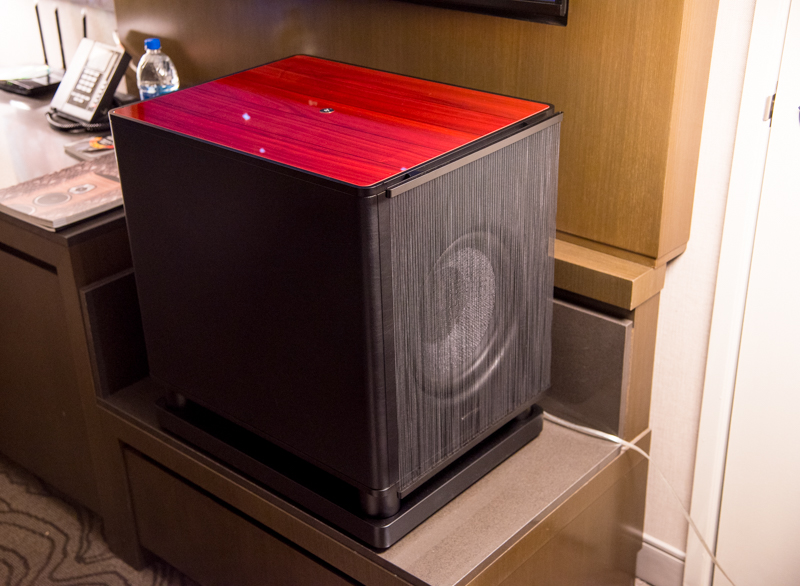Sonus Faber Electa Amator III & Gravis VI Sub – RMAF 2018

Sonus Faber actually had two rooms rocking at RMAF this year. The bigger setup featured the new line-array XRT2.1Ks we covered at our visit to the NY World of McIntosh secured to a pair of the MC1.25KW monos. A very nice sounding system in its own right, but our attention was drawn even closer to the secondary room which housed an MA8000 integrated and MC80 transport to a pair of the new Electa Amator III bookshelf-style speakers.
The two-way speakers were sitting next to a new Gravis VI ($7k) sub due out in early December, but at the time of my visit wasn’t hooked up. Its was perhaps one of the oldest tricks in the standmount demo book, but one I still like to witness. The host plays a low-end intensive song, then proclaims the sub wasn’t on, and then lets attendees know its only a two-way! Even so, the little scene was still probably the most dramatic thing I saw inside an active demonstration that day (besides good sound and dramatic music).

The announcement of the Electa Amator III marks the 35th anniversary for Sonus Faber with a solid statement of “Italian tradition, culture and craftsmanship”. This theme of reimagining the brand though the Homage Tradition Collection first started in 2017 with the release of the Flagship Aida, Sonette line and now also the Gravis sub. The bookshelf makes its music via a 28mm “Damped Apex Dome” tweeter. “Paracross Topology” crossover design and a custom 6.5″ woofer.
The sound itself in the room was delightfully intense and filled with densely populated texture. The bass was indeed substantial enough to pull of the bait-and-switch, but didn’t leave a gap anywhere in between the mids or highs. Sonus Faber is capable of producing some of the best sound in the business, and it’s refreshing to see the Italian influence deliver so highly within the new products. It usually manifests itself in ways that standout around tone and balance, lifelike recreation and professional-prepped sonic energy.
The new Amator III hits the American shores in December 2018 with an estimated cost of 10,000 Euro.



